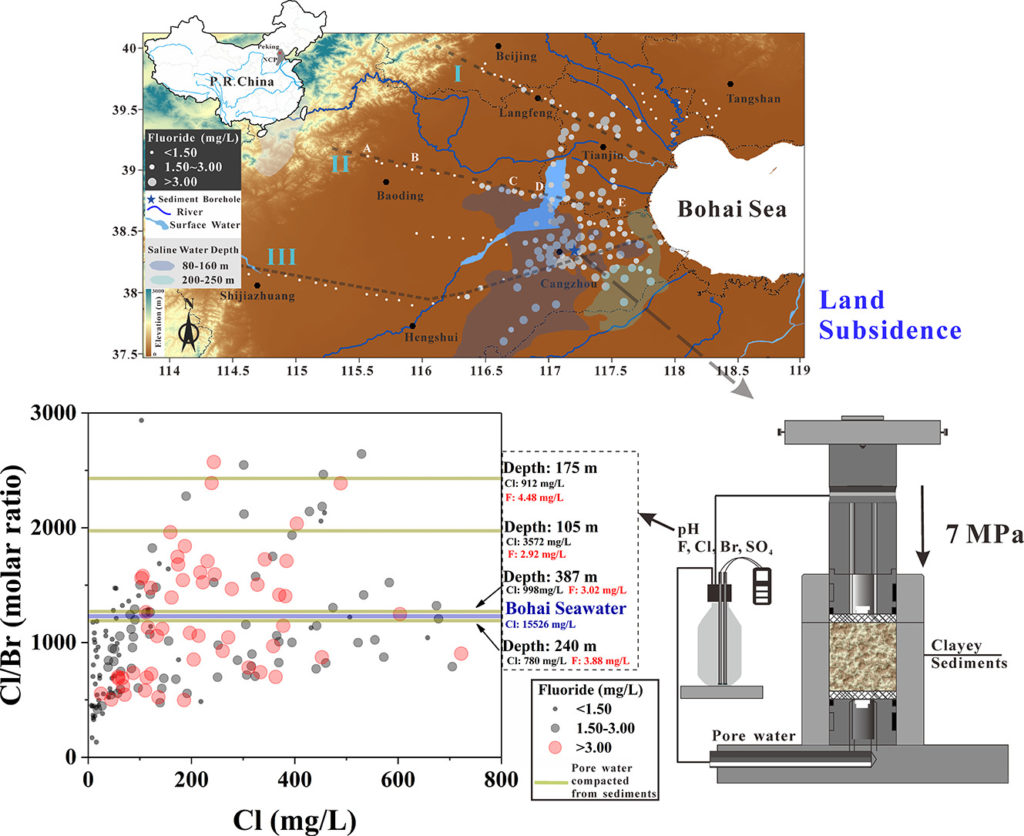Highlights
- High F groundwater is distributed in central plain and coastal area of the NCP.
- Hydrochemical evolution along groundwater flow favors F mobilization in groundwater.
- Pore water compacted from clayey sediments had a high F concentration.
- Land subsidence causes the release of F trapped in strata into groundwater.
Abstract
Fluoride enrichment in groundwater at the North China Plain (NCP) is posing a potential health risk to human being. To better understand the enrichment mechanism of fluoride in the groundwater systems, the groundwater, sediments samples and pore water compacted from clayey sediments were collected to perform the chemistry analysis and geochemical inverse modeling. The results showed that fluoride concentration in groundwater from the NCP has a range of 0.38–7.35 mg/L, and 67.8% of groundwater samples have the fluoride concentration higher than 1.5 mg/L. High fluoride groundwater was mainly distributed in the central plain and coastal area of the NCP, and characterized by the Na-HCO3 or Na-Cl type water, lower Ca and higher TDS concentrations. Along groundwater flow-path from the mountainous to coastal areas, several hydrogeochemical processes control the mobilization and enrichment of fluoride in groundwater, including cation exchange between Ca and Na on the surface of clay minerals, precipitation/ dissolution of carbonates, dissolution of fluorite, marine transgressions, and release of pore water trapped in clayey sediments caused by land subsidence. The fluoride concentrations in the pore water compacted from the sediments ranged from 2.92 to 4.48 mg/L. At the central plain and coastal area, the wide occurrence of land subsidence resulted from the groundwater over-exploration leads to the release of pore water rich in fluoride into surrounding aquifers, thereby elevating the concentration of groundwater fluoride. The resulted groundwater environment with high salinity and some newly-introduced ions, such as Mg, promote the dissolution of fluorite, which was under-saturated in the groundwater samples from the NCP, further enhancing the fluoride enrichment in the groundwater at the coastal area. The findings of this study will provide new insights on the generation of high fluoride groundwater.
Graphical abstract

